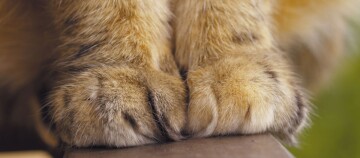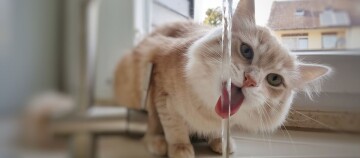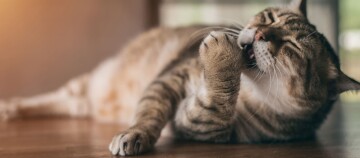Eye Diseases in Cats - Treatment for Cats with Sensitive Eyes
17.10.2022 - Reading time: 5 minutes
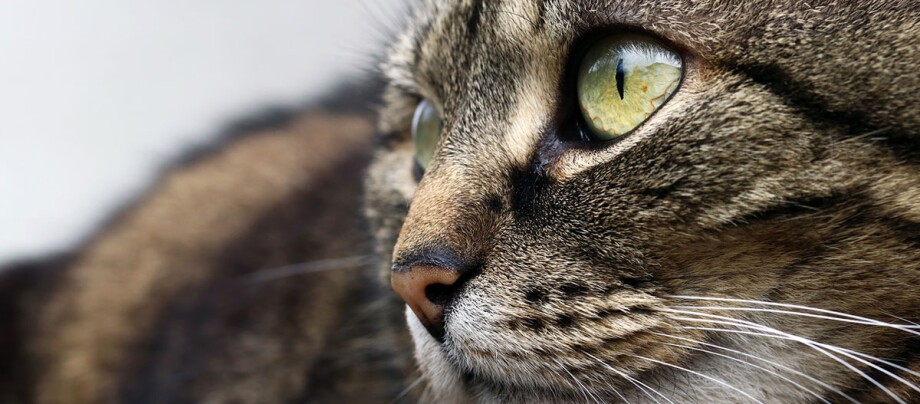
A cat's visual apparatus and eyes are unique. The reflective nature of the cat's eyes and the ability to maintain vision in low light conditions are some of the most fascinating things that cats have to offer anatomically. This makes it all the more critical when a disease strikes the cat's eyes. In the worst case scenario, the animal may go blind.
How can I tell that my cat has problems with its eyes?
Some cat breeds are particularly susceptible to eye diseases. The reason for this is their breeding history: certain body characteristics or a susceptibility predestination due to reproduction from a smaller gene pool are risk factors. Purebred cats like Persians, with flat noses, shortened tear ducts and protruding eyes are a typical example. Needless to say, any breed of house cat can suffer from an eye condition. The sooner you become aware of symptoms, the better.
Look into your cat’s eyes every day and look out for the slightest changes. Be discreet: cats perceive staring as an aggressive act and react accordingly. If you literally keep a close eye on your cat, you should notice small changes immediately. These include opacities, watery eyes and debris around the eye, swelling, redness or differentially dilated pupils. Even if the eye itself looks unchanged, eye tremors and constant blinking indicate a problem. If the cat rubs and scratches its eye or suddenly becomes unusually averse to light, there may also be a serious problem.
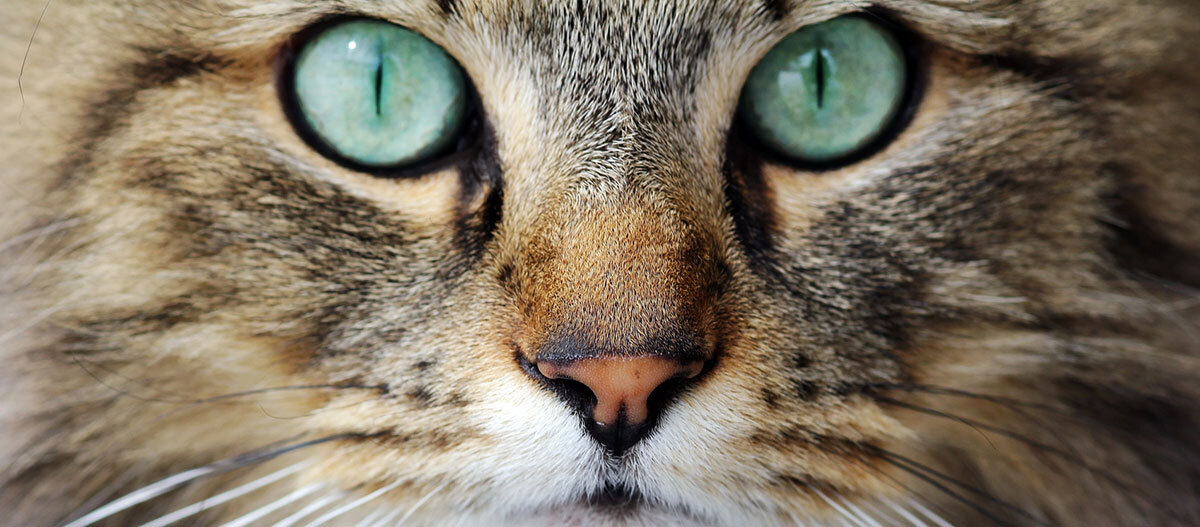
What kind of cat eye diseases exist?
There are many causes associated with eye disease:
- Mechanical injuries, e.g. from claws during territorial fights, should be taken particularly seriously, as wounds of this nature can quickly lead to infection and inflammation. Wounds should be promptly treated by a vet.
- The same applies to foreign bodies that have entered into the eye, especially if the cat is an outdoor cat and roams through bushes and tall grass.
- In addition, there may be problems with the eyes as a side effect of serious feline diseases such as diabetes, leukosis, herpes or high blood pressure.
- Direct eye diseases such as glaucoma and cataracts also occur in cats.
- An infestation of viruses or parasites can lead to conjunctivitis, cat cold and problems with the eyelids.
In case of a disorder affecting the cat’s eye, it is thus not only advisable to treat the local symptom, but to carefully investigate the cause – for example, tumours.
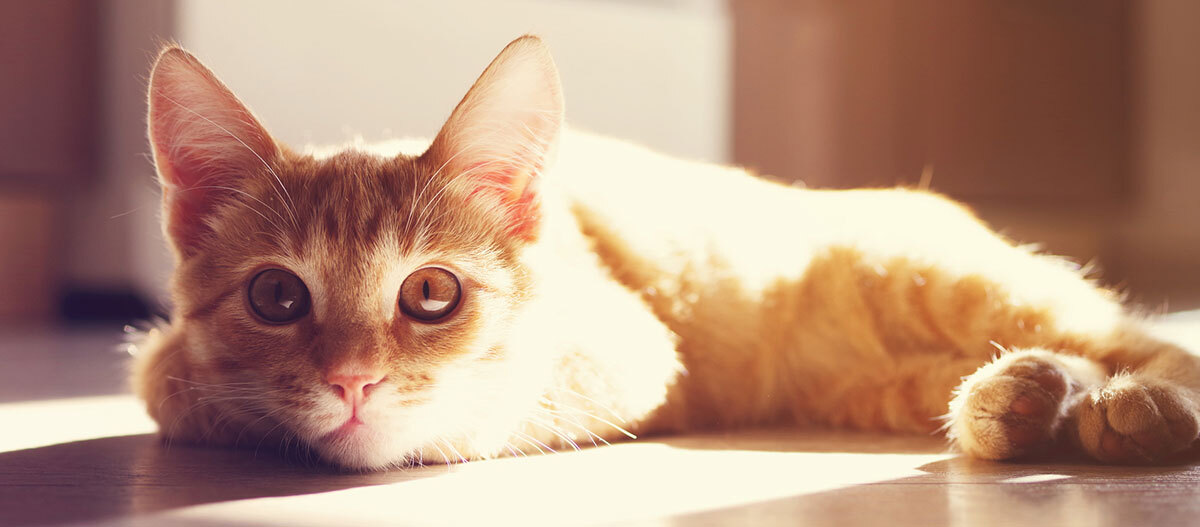
How does a disease or eye inflammation manifest itself in cats?
A cat’s eye is a complex organ with several sub-components, each of which can be individually affected by disease. Outside the eye, these include the eyelid, the lacrimal apparatus, the conjunctiva and the nictitating membrane; a lid that covers the eye from the inner corner of the eye and produces tear fluid by means of a gland. In the eye itself, the pupil, retina, iris and cornea may become diseased.
Watery eyes in cats: How do I administer eye drops?
In case of watery eye conditions such as rhinitis or conjunctivitis, you will need medication such as eye drops to treat the cat. Cats are not the most accommodating of patients when it comes to administering medicine. No matter what the symptoms are: Eye diseases should always be treated by a vet. Sit behind the cat and gently but firmly grasp the back of its head between the ears and eyes. Do not hurry and try to calm the cat down – it will still not accept this treatment without some protest. Hold the pipette containing the drops from behind the cat as close as possible to the cat’s eye and administer the medication drop by drop into the lower eyelid as prescribed. This can be done more easily if you have someone to help you whereby the second person can hold the cat while you apply the drops.
Here are some of the eye diseases affecting cats
Nictitating membrane prolapse
Nictitating membrane prolapse is one of the most common eye diseases for which there are a number of triggers. The nictitating membrane may not open or close completely, thus only partially covering the eye. Common triggers for nictitating membrane prolapse are parasites, a middle ear infection or a problem in the gastrointestinal tract. At first glance, this correlation seems unusual: diarrhoea leads to fluid loss and indirectly to a disturbance of the tear balance.
Conjunctivitis
Conjunctivitis is characterised by red, swollen eyes and heavy tearing. In case of viral or bacterial involvement, the initially clear discharge is white or yellowish in colour and may be mucous. When only one eye is affected, it may be the result of a local inflammation caused by an injury, a foreign body or an allergy. If it is equally pronounced on both sides, a bacterial or viral cause is more likely. If viral infection is present, there is a risk of permanent damage to the cornea if left untreated.
Tumours and damage to the lens
Tumours on the eyelid and damage to the lens significantly affect your cat’s vision and well-being. It is important to remove them surgically as soon as possible.
Corneal injuries
Corneal injuries, i.e. damage to the eye itself, should be treated with antibiotics and, where necessary, with surgery. Triggers may be mechanical injuries, and often also herpes viruses.
Diseases of the iris
It is usually difficult to determine the causes of diseases of the iris. Injuries are just as likely as tumours or infections. Indications include deformations or pigment spots in the iris.
Changes in the pupils
Conspicuous changes in the pupils indicate retinal damage due to inflammation, unhealthy blood pressure or deficiency symptoms. The methods of treatment differ depending on the trigger.
